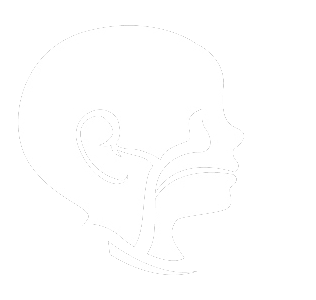Nosebleeds

I see a LOT of patients with nosebleeds (also knows as "epistaxis"). They tend to run in families - many of the kids that I see have parents that also had them as children, and they do tend to get better over time. The number one thing to realize is that there is nothing any doctor can do to make it so that you NEVER get another nosebleed - it’s just not possible to totally prevent these. But there ARE a number of things that we can do to help.
The nose is lined by something called “mucosa”, which has a terrific blood supply. And the front of the nose is the one area of the body where this mucosa can easily dry out due to the constant airflow. This means that large blood vessels on the wall in the middle of the nose (the “septum”) can crack and bleed. The mouth is lined with mucosa also, but people very rarely get mouthbleeds, because the mouth is usually wet. So your number one ally in the fight against nosebleeds is keeping the nose MOIST.
There are a number of ways of doing this. If your home has dry air (common in rooms with baseboard heat in the winter), a room humidifier is a good idea. Either a cool mist or a warm mist type will work, and there are advantages and disadvantages of each design. Parents of small children often prefer cool mist to avoid the safety risk of a heating element and boiling water inside. Also, the cool mist versions tend to fill large spaces better, use less power and are easier to clean. On the other hand, warm mist humidifiers are quieter (no fan), and may be cleaner (the boiling kills germs). They also may be more comfortable in the winter. Whichever one you get, you need to make sure that you keep it clean, following the manufacturer's recommendations. Otherwise they grow mold and can blow it into the air, and you don't want that! There are some recommended models on my Amazon product page.
Saline sprays and lubricating gels can keep the lining of the nose moist. Saline is just salt water, and you can use these as often as you like - think about them as chapstick for the nose. You can get over-the-counter saline sprays (like Xlear) that contain xylitol, a natural sugar that helps reduce the ability of germs to stick to the lining of the nose, which can also help. I sometimes recommend a short course of a prescription water-based antibiotic cream like Bactroban (mupirocin), which seems to reduce the frequency of nosebleeds. Some people use Vaseline or Bacitracin ointment (which is basically Vaseline with an antibiotic), but I prefer to avoid using oil-based products in the nose, as concretions can build up.
Another really important thing to know is how to stop a nosebleed. What you do is PINCH THE NOSTRILS TOGETHER for 5-10 minutes. This stops the vast majority of nosebleeds, since they usually come from the front of the septum. Head position is less important, although it's easier and safer to do this with a child sitting up. Pinching the bony bridge of the nose does nothing - I'm not sure how that idea got started. Some people pack the nose with tissue paper or other products designed for this purpose. In most cases, pinching works better - you can get stronger direct pressure on the bleeding point, and you don't have the risk of pieces of packing breaking off inside the nose.
I usually check the back of the nose with a telescope when I see patients for nosebleeds, but it is very rare to find a growth or other bleeding point in children. There are some medications that are well known to cause this problem, like nasal steroids or Accutane. Nose picking is a common risk factor for this in kids (and adults!). Also, in rare cases, there can be clotting problems that are inherited or develop over time, but those patients usually have easy bruising, excessive bleeding with tooth loss, etc...
Older kids can benefit from nasal cautery, which means touching those blood vessels in the front of the nose with an irritating chemical (silver nitrate), although under anesthesia an electric current can also be used. Cautery is generally done in the office with topical anesthesia. It's very safe, but you can't do both sides of the septum on the same day without risking a perforation. For this reason, we usually wait two weeks between the sides. It's also common to see some bleeding after cautery as the scab breaks up inside the nose (just pinch if this happens). Cautery is rarely done in very young children, who are more likely to have diffuse bleeding rather than from a few prominent blood vessels. In these cases, I generally try aggressive humidification and lubrication first.

The nose is lined by something called “mucosa”, which has a terrific blood supply. And the front of the nose is the one area of the body where this mucosa can easily dry out due to the constant airflow. This means that large blood vessels on the wall in the middle of the nose (the “septum”) can crack and bleed. The mouth is lined with mucosa also, but people very rarely get mouthbleeds, because the mouth is usually wet. So your number one ally in the fight against nosebleeds is keeping the nose MOIST.
There are a number of ways of doing this. If your home has dry air (common in rooms with baseboard heat in the winter), a room humidifier is a good idea. Either a cool mist or a warm mist type will work, and there are advantages and disadvantages of each design. Parents of small children often prefer cool mist to avoid the safety risk of a heating element and boiling water inside. Also, the cool mist versions tend to fill large spaces better, use less power and are easier to clean. On the other hand, warm mist humidifiers are quieter (no fan), and may be cleaner (the boiling kills germs). They also may be more comfortable in the winter. Whichever one you get, you need to make sure that you keep it clean, following the manufacturer's recommendations. Otherwise they grow mold and can blow it into the air, and you don't want that! There are some recommended models on my Amazon product page.
Saline sprays and lubricating gels can keep the lining of the nose moist. Saline is just salt water, and you can use these as often as you like - think about them as chapstick for the nose. You can get over-the-counter saline sprays (like Xlear) that contain xylitol, a natural sugar that helps reduce the ability of germs to stick to the lining of the nose, which can also help. I sometimes recommend a short course of a prescription water-based antibiotic cream like Bactroban (mupirocin), which seems to reduce the frequency of nosebleeds. Some people use Vaseline or Bacitracin ointment (which is basically Vaseline with an antibiotic), but I prefer to avoid using oil-based products in the nose, as concretions can build up.
Another really important thing to know is how to stop a nosebleed. What you do is PINCH THE NOSTRILS TOGETHER for 5-10 minutes. This stops the vast majority of nosebleeds, since they usually come from the front of the septum. Head position is less important, although it's easier and safer to do this with a child sitting up. Pinching the bony bridge of the nose does nothing - I'm not sure how that idea got started. Some people pack the nose with tissue paper or other products designed for this purpose. In most cases, pinching works better - you can get stronger direct pressure on the bleeding point, and you don't have the risk of pieces of packing breaking off inside the nose.
I usually check the back of the nose with a telescope when I see patients for nosebleeds, but it is very rare to find a growth or other bleeding point in children. There are some medications that are well known to cause this problem, like nasal steroids or Accutane. Nose picking is a common risk factor for this in kids (and adults!). Also, in rare cases, there can be clotting problems that are inherited or develop over time, but those patients usually have easy bruising, excessive bleeding with tooth loss, etc...
Older kids can benefit from nasal cautery, which means touching those blood vessels in the front of the nose with an irritating chemical (silver nitrate), although under anesthesia an electric current can also be used. Cautery is generally done in the office with topical anesthesia. It's very safe, but you can't do both sides of the septum on the same day without risking a perforation. For this reason, we usually wait two weeks between the sides. It's also common to see some bleeding after cautery as the scab breaks up inside the nose (just pinch if this happens). Cautery is rarely done in very young children, who are more likely to have diffuse bleeding rather than from a few prominent blood vessels. In these cases, I generally try aggressive humidification and lubrication first.
